Sending your information off to another person’s cloud to run an AI mannequin can really feel like handing your home keys to a stranger. There’s all the time the possibility that you just’ll come dwelling to seek out that they absconded with all of your valuables or left a large mess so that you can clear up (at your price, in fact). Or what in the event that they modified the locks and now you possibly can’t even get again in?!
In case you’ve ever wished extra management or peace of thoughts over your AI, the answer could be proper underneath your nostril: internet hosting AI fashions regionally. Sure, by yourself {hardware} and underneath your personal roof (bodily or digital). It’s form of like deciding to cook dinner your favourite dish at dwelling as a substitute of ordering takeout. You realize precisely what goes into it; you fine-tune the recipe, and you’ll eat anytime you need — no relying on anybody else to get it proper.
On this information, we’ll break down why native AI internet hosting may rework the best way you’re employed, what {hardware} and software program you want, how you can do it step-by-step, and finest practices to maintain every little thing working easily. Let’s dive in and provide the energy to run AI by yourself phrases.
What Is Domestically Hosted AI (and Why You Ought to Care)
Domestically hosted AI means working machine studying fashions instantly on tools you personal or totally management. You should utilize a house workstation with an honest GPU, a devoted server in your workplace, or perhaps a rented bare-metal machine, if that fits you higher.
Why does this matter? A number of necessary causes…
- Privateness and information management: No delivery delicate data off to third-party servers. You maintain the keys.
- Quicker response occasions: Your information by no means leaves your community, so that you skip the round-trip to the cloud.
- Customization: Tweak, fine-tune, and even re-architect your fashions nevertheless you see match.
- Reliability: Keep away from downtime or utilization limits that cloud AI suppliers impose.
In fact, internet hosting AI your self means you’ll handle your individual infrastructure, updates, and potential fixes. However if you wish to be sure that your AI is actually yours, native internet hosting is a game-changer.
| Execs | Cons |
| Safety and information privateness: You’re not sending proprietary information to exterior APIs. For a lot of small companies coping with consumer data or inner analytics, that’s an enormous plus for compliance and peace of thoughts.
Management and customization: You’re free to decide on fashions, tailor hyperparameters, and experiment with totally different frameworks. You’re not certain by vendor constraints or pressured updates which may break your workflows. Efficiency and pace: For real-time companies, like a dwell chatbot or on-the-fly content material era, native internet hosting can eradicate latency points. You possibly can even optimize {hardware} particularly in your mannequin’s wants. Doubtlessly decrease long-term prices: In case you deal with massive volumes of AI duties, cloud charges can add up rapidly. Proudly owning the {hardware} could be cheaper over time, particularly for top utilization. |
Preliminary {hardware} prices: High quality GPUs and adequate RAM will be expensive. For a small enterprise, that would eat up some funds.
Upkeep overhead: You deal with OS updates, framework upgrades, and safety patches. Otherwise you rent somebody to do it. Experience required: Troubleshooting driver points, configuring setting variables, and optimizing GPU utilization could be tough should you’re new to AI or programs administration. Power use and cooling: Huge fashions can demand numerous energy. Plan for electrical energy prices and appropriate air flow should you’re working them across the clock. |
Assessing {Hardware} Necessities
Getting your bodily setup proper is among the largest steps towards profitable native AI internet hosting. You don’t need to make investments time (and cash) into configuring an AI mannequin, solely to find your GPU can’t deal with the load or your server overheats.
So, earlier than you dive into the small print of set up and mannequin fine-tuning, it’s value mapping out precisely what kind of {hardware} you’ll want.
Why {Hardware} Issues for Native AI
If you’re internet hosting AI regionally, efficiency largely boils right down to how highly effective (and suitable) your {hardware} is. A strong CPU can handle less complicated duties or smaller machine studying fashions, however deeper fashions usually want GPU acceleration to deal with the extreme parallel computations. In case your {hardware} is underpowered, you’ll see gradual inference occasions, uneven efficiency, otherwise you would possibly fail to load massive fashions altogether.
That doesn’t imply you want a supercomputer. Many trendy mid-range GPUs can deal with medium-scale AI duties — it’s all about matching your mannequin’s calls for to your funds and utilization patterns.
Key Issues
1. CPU vs. GPU
Some AI operations (like primary classification or smaller language mannequin queries) can run on a stable CPU alone. Nevertheless, if you need real-time chat interfaces, textual content era, or picture synthesis, a GPU is a near-must.
2. Reminiscence (RAM) and Storage
Giant language fashions can simply devour tens of gigabytes. Purpose for 16GB or 32GB system RAM for average utilization. In case you plan to load a number of fashions or practice new ones, 64GB+ could be useful.
An SSD can be strongly advisable — loading fashions from spinning HDDs gradual every little thing down. A 512GB SSD or bigger is frequent, relying on what number of mannequin checkpoints you retailer.
3. Server vs. Workstation
In case you’re simply experimenting or solely want AI often, a robust desktop would possibly do the job. Plug in a mid-range GPU and also you’re set. For twenty-four/7 uptime, think about a devoted server with correct cooling, redundant energy provides, and probably ECC (error-correcting) RAM for stability.
4. Hybrid Cloud Method
Not everybody has the bodily area or want to handle a loud GPU rig. You possibly can nonetheless “go native” by renting or buying a devoted server from a internet hosting supplier that helps GPU {hardware}. That method, you get full management over your setting with out bodily sustaining the field.
| Consideration | Key Takeaway |
| CPU vs.GPU | CPUs work for mild duties, however GPUs are important for real-time or heavy AI. |
| Reminiscence and Storage | 16–32GB RAM is baseline; SSDs are a should for pace and effectivity. |
| Server vs. Workstation | Desktops are advantageous for mild use; servers are higher for uptime and reliability. |
| Hybrid Cloud Method | Hire GPU servers if area, noise, or {hardware} administration is a priority. |
Pulling It All Collectively
Take into consideration how closely you’ll use AI. In case you see your mannequin always in motion (like a full-time chatbot or each day picture era for advertising and marketing), put money into a strong GPU and sufficient RAM to maintain every little thing working easily. In case your wants are extra exploratory or mild utilization, a mid-tier GPU card in a typical workstation can ship respectable efficiency with out destroying your funds.
Finally, {hardware} shapes your AI expertise. It’s simpler to plan fastidiously up entrance than to juggle infinite system upgrades when you notice your mannequin requires extra juice. Even should you begin small, control the next step: in case your native consumer base or mannequin complexity grows, you’ll need headroom to scale.
Selecting the Proper Mannequin (and Software program)
Choosing an open-source AI mannequin to run regionally would possibly really feel like watching a large menu (like that phonebook they name a menu at Cheesecake Manufacturing unit). You’ve acquired infinite choices, every with its personal flavors and best-use situations. Whereas selection is the spice of life, it may also be overwhelming.
The hot button is to nail down what precisely you want out of your AI instruments: textual content era, picture synthesis, domain-specific predictions, or one thing else altogether.
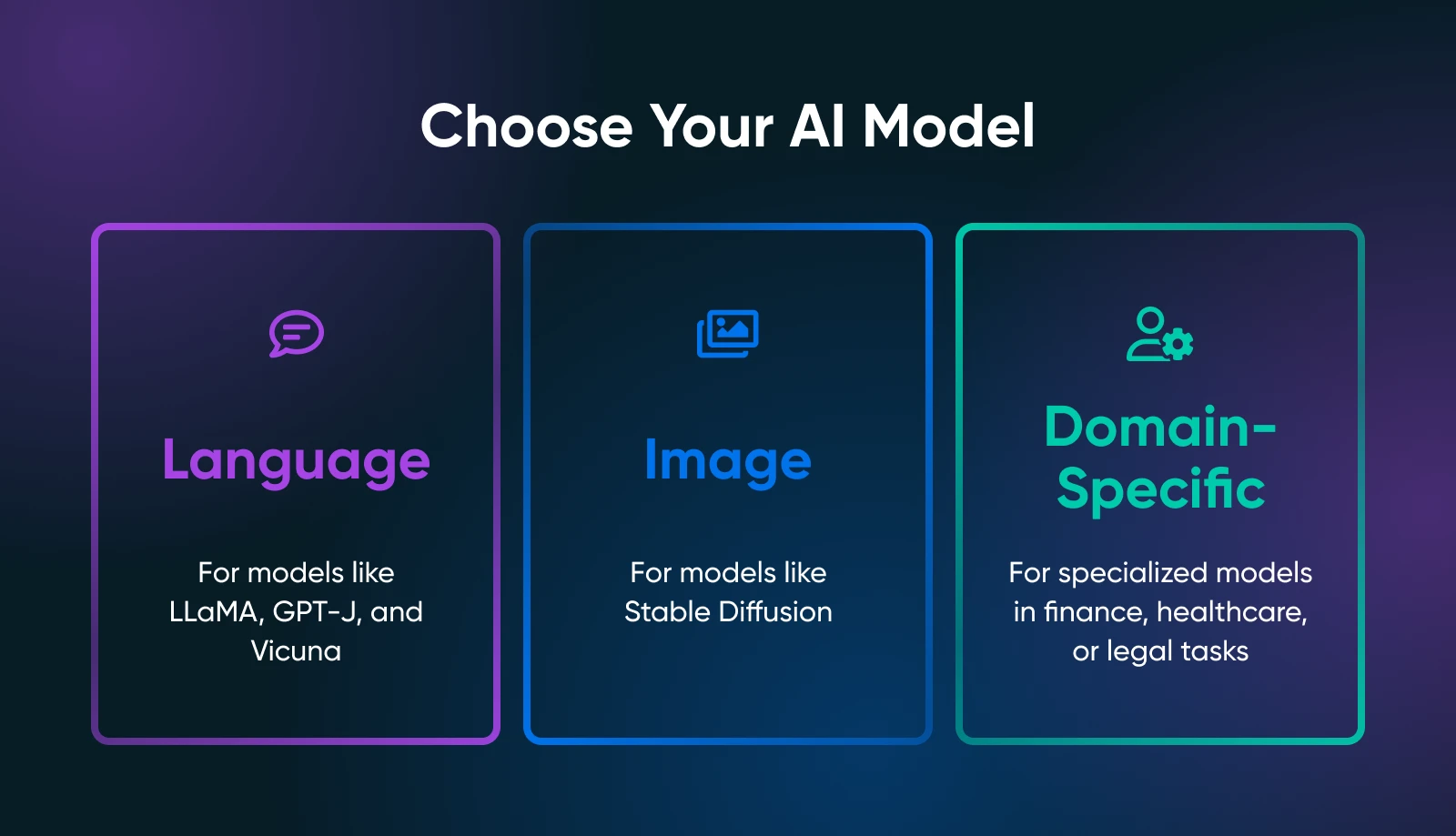
Your use case drastically narrows the seek for the suitable mannequin. For instance, if you wish to generate advertising and marketing copy, you’d discover language fashions like LLaMA derivatives. For visible duties, you’d take a look at image-based fashions resembling Steady Diffusion or flux.
Fashionable Open-Supply Fashions
Relying in your wants, you need to try the next.
Language Fashions
- LLaMA/ Alpaca / Vicuna: All well-known tasks for native internet hosting. They’ll deal with chat-like interactions or textual content completion. Examine how a lot VRAM they require (some variants want solely ~8GB).
- GPT-J / GPT-NeoX: Good for pure textual content era, although they are often extra demanding in your {hardware}.
Picture Fashions
- Steady Diffusion: A go-to for producing artwork, product photos, or idea designs. It’s broadly used and has a large group providing tutorials, add-ons, and artistic expansions.
Area-Particular Fashions
- Browse Hugging Face for specialised fashions (e.g., finance, healthcare, authorized). You would possibly discover a smaller, domain-tuned mannequin that’s simpler to run than a general-purpose big.
Open Supply Frameworks
You’ll have to load and work together along with your chosen mannequin utilizing a framework. Two business requirements dominate:
- PyTorch: Famend for user-friendly debugging and an enormous group. Most new open-source fashions seem in PyTorch first.
- TensorFlow: Backed by Google, steady for manufacturing environments, although the educational curve will be steeper in some areas.
The place To Discover Fashions
- Hugging Face Hub: An enormous repository of open-source fashions. Learn group opinions, utilization notes, and watch for a way actively a mannequin is maintained.
- GitHub: Many labs or indie devs put up customized AI options. Simply confirm the mannequin’s license and ensure it’s steady sufficient in your use case.
When you decide your mannequin and framework, take a second to learn the official docs or any instance scripts. In case your mannequin is tremendous contemporary (like a newly launched LLaMA variant), be ready for some potential bugs or incomplete directions.
The extra you perceive your mannequin’s nuances, the higher you’ll be at deploying, optimizing, and sustaining it in a neighborhood setting.
Step-by-Step Information: How To Run AI Fashions Domestically
Now you’ve chosen appropriate {hardware} and zeroed in on a mannequin or two. Beneath is an in depth walkthrough that ought to get you from a clean server (or workstation) to a functioning AI mannequin you possibly can play with.
Step 1: Put together Your System
- Set up Python 3.8+
Just about all open-source AI runs on Python lately. On Linux, you would possibly do:
sudo apt replace
sudo apt set up python3 python3-venv python3-pipOn Home windows or macOS, obtain from python.org or use a bundle supervisor like Homebrew.
- GPU drivers and toolkit
If in case you have an NVIDIA GPU, set up the newest drivers from the official web site or your distro’s repository. Then add the CUDA toolkit (matching your GPU’s computation functionality) if you need GPU-accelerated PyTorch or TensorFlow.
- Non-compulsory: Docker or Venv
In case you desire containerization, arrange Docker or Docker Compose. In case you like setting managers, use Python venv to isolate your AI dependencies.
Step 2: Set Up a Digital Setting
Digital environments create remoted environments the place you possibly can set up or take away libraries and alter Python model with out affecting your system’s default Python setup.
This protects you complications down the road when you’ve a number of tasks working in your pc.
Right here is how one can create a digital setting:
python3 -m venv localAI
supply localAI/bin/activate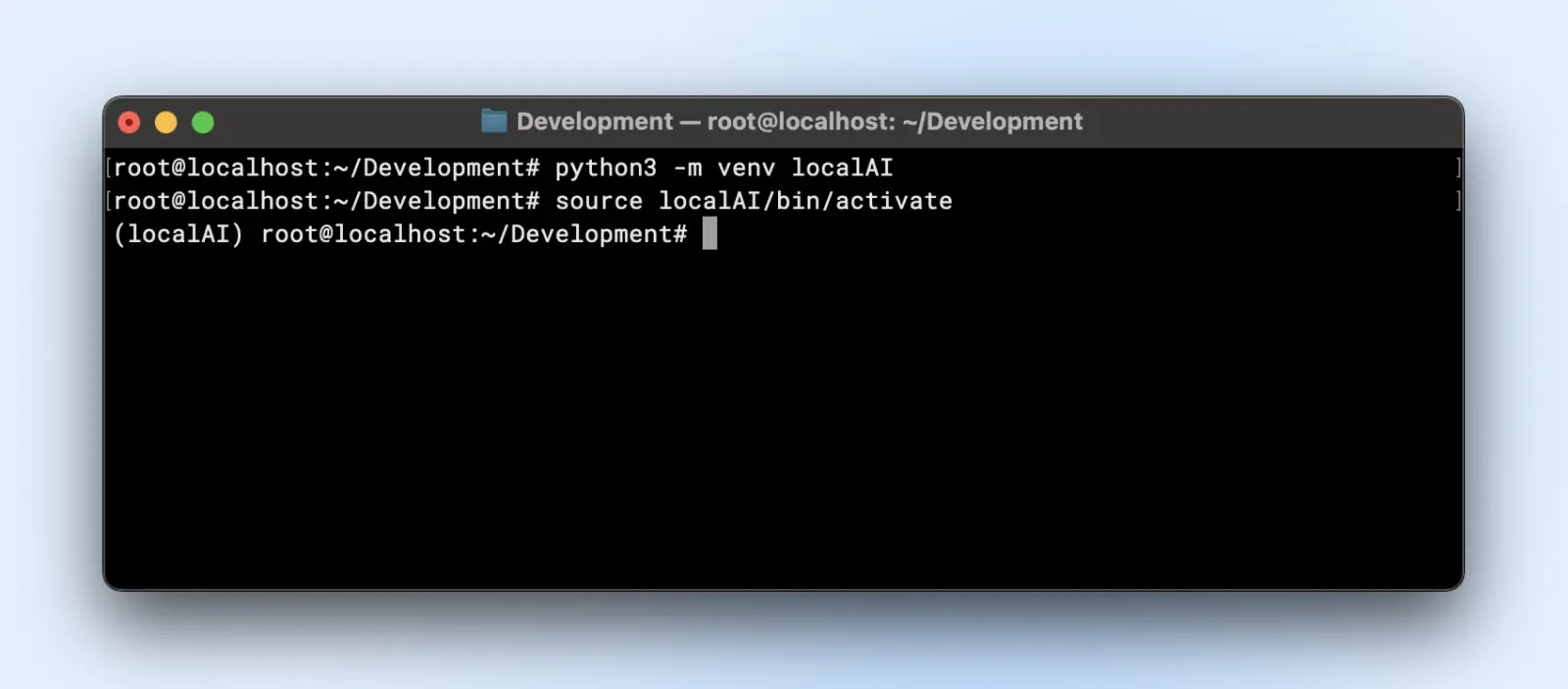
You’ll discover the localAI prefix to your terminal immediate. Which means you’re contained in the digital setting and any adjustments that you just make right here won’t have an effect on your system setting.
Step 3: Set up Required Libraries
Relying on the mannequin’s framework, you’ll need:
pip3 set up torch torchvision torchaudio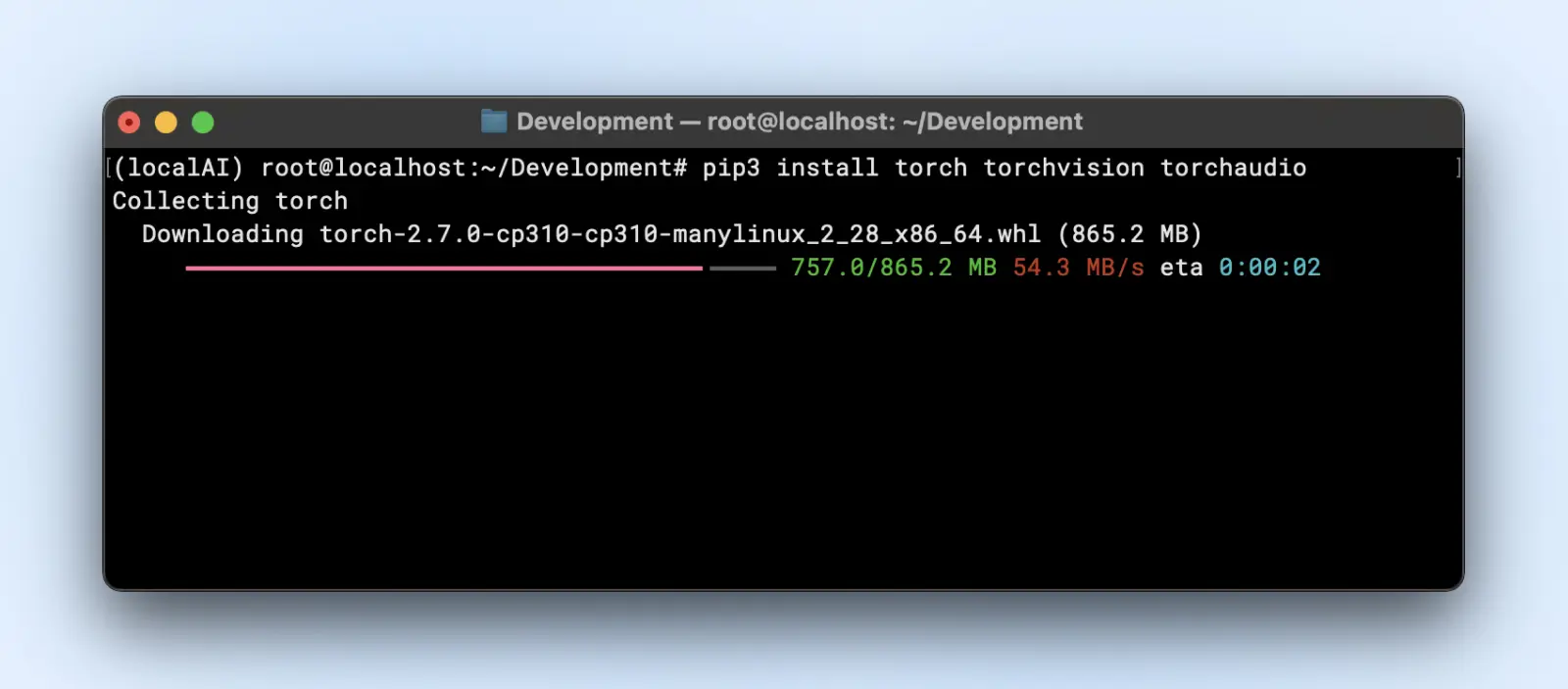
Or should you want GPU acceleration:
pip3 set up torch torchvision torchaudio --extra-index-url https://obtain.pytorch.org/whl/cu118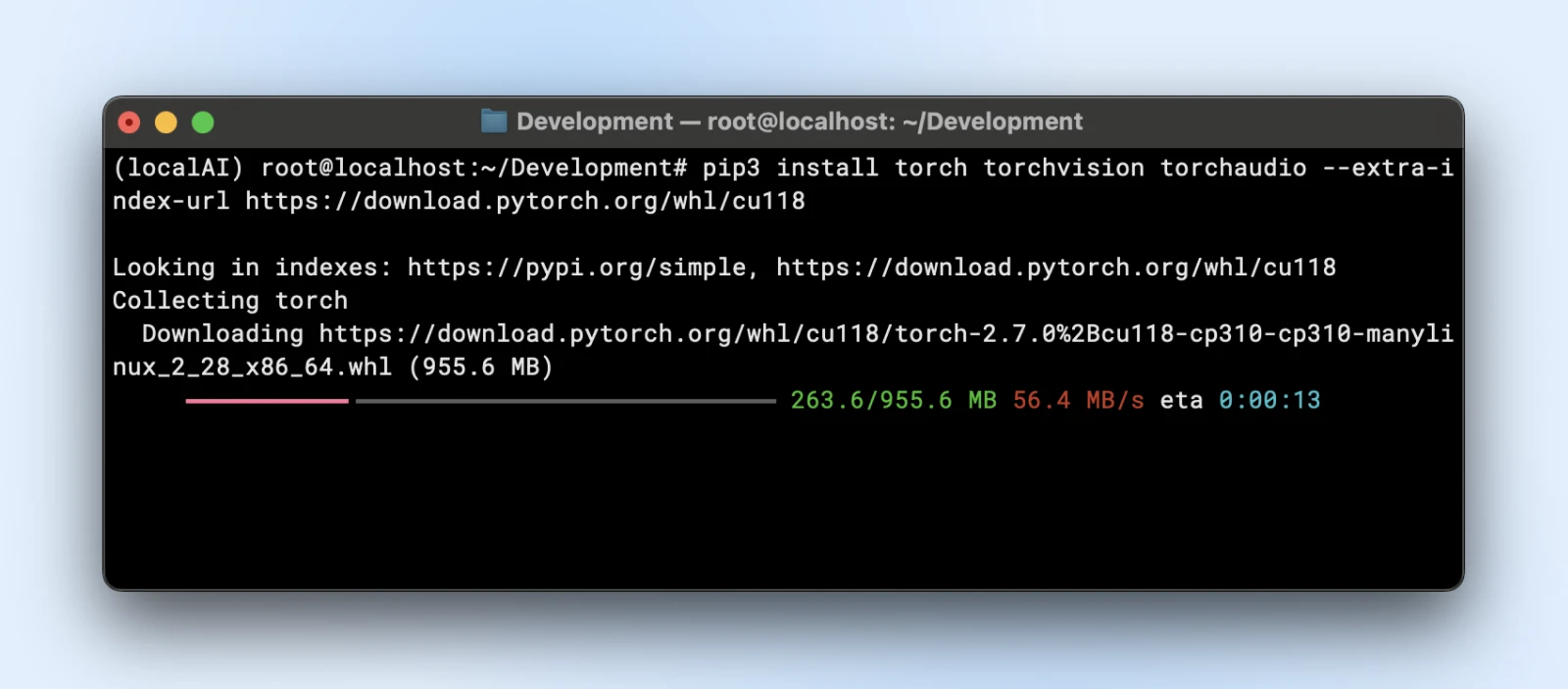
pip3 set up tensorflow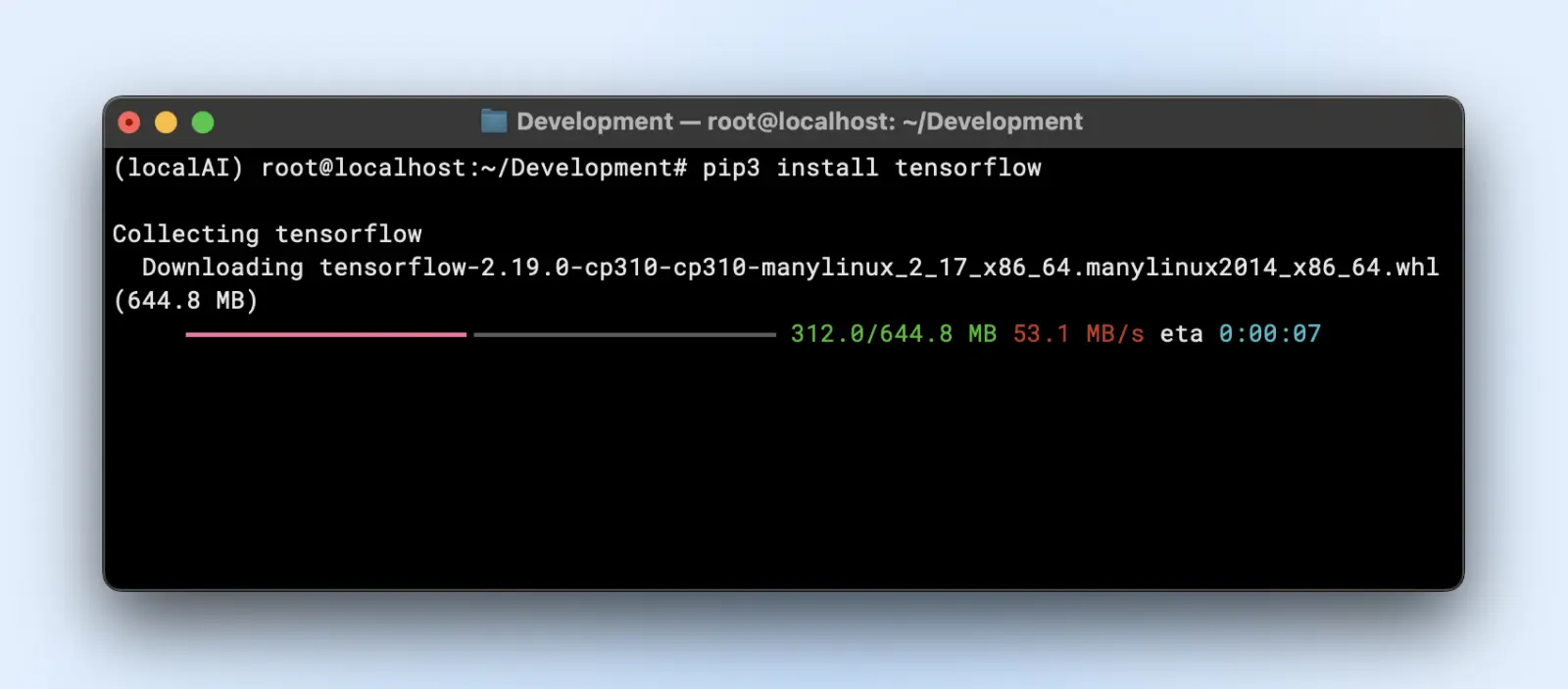
For GPU utilization, be sure you have the suitable “tensorflow-gpu” or related model.
Step 4: Obtain and Put together Your Mannequin
Let’s say you’re utilizing a language mannequin from Hugging Face.
- Clone or obtain:
Now you would possibly need to set up, git massive file programs (LFS) earlier than you proceed for the reason that huggingface repositories will pull in massive mannequin recordsdata.
sudo apt set up git-lfs
git clone https://huggingface.co/your-modelTinyLlama repository is a small native LLM repository you possibly can clone by working the beneath command.
git clone https://huggingface.co/Qwen/Qwen2-0.5B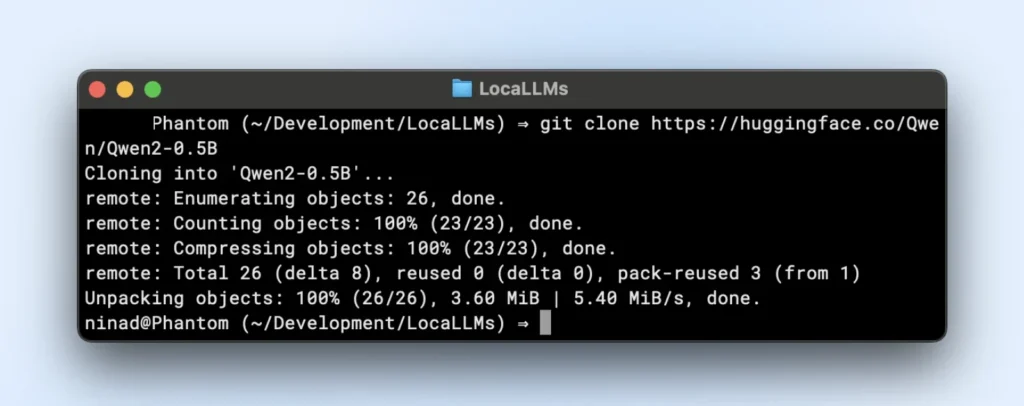
- Folder group:
Place mannequin weights in a listing like “~/fashions/
Step 5: Load and Confirm Your Mannequin
Right here is an instance script that you would be able to run instantly. Simply just be sure you change the model_path to match the listing of the cloned repository.
import torch
from transformers import AutoTokenizer, AutoModelForCausalLM
import logging
# Suppress warnings
logging.getLogger("transformers").setLevel(logging.ERROR)
# Use native mannequin path
model_path = "/Customers/dreamhost/path/to/cloned/listing"
print(f"Loading mannequin from: {model_path}")
# Load mannequin and tokenizer
tokenizer = AutoTokenizer.from_pretrained(model_path)
mannequin = AutoModelForCausalLM.from_pretrained(
model_path,
torch_dtype=torch.float16,
device_map="auto"
)
# Enter immediate
immediate = "Inform me one thing attention-grabbing about DreamHost:"
print("n" + "="*50)
print("INPUT:")
print(immediate)
print("="*50)
# Generate response
inputs = tokenizer(immediate, return_tensors="pt").to(mannequin.machine)
output_sequences = mannequin.generate(
**inputs,
max_new_tokens=100,
do_sample=True,
temperature=0.7
)
# Extract simply the generated half, not together with enter
input_length = inputs.input_ids.form[1]
response = tokenizer.decode(output_sequences[0][input_length:], skip_special_tokens=True
# Print output
print("n" + "="*50)
print("OUTPUT:")
print(response)
print("="*50)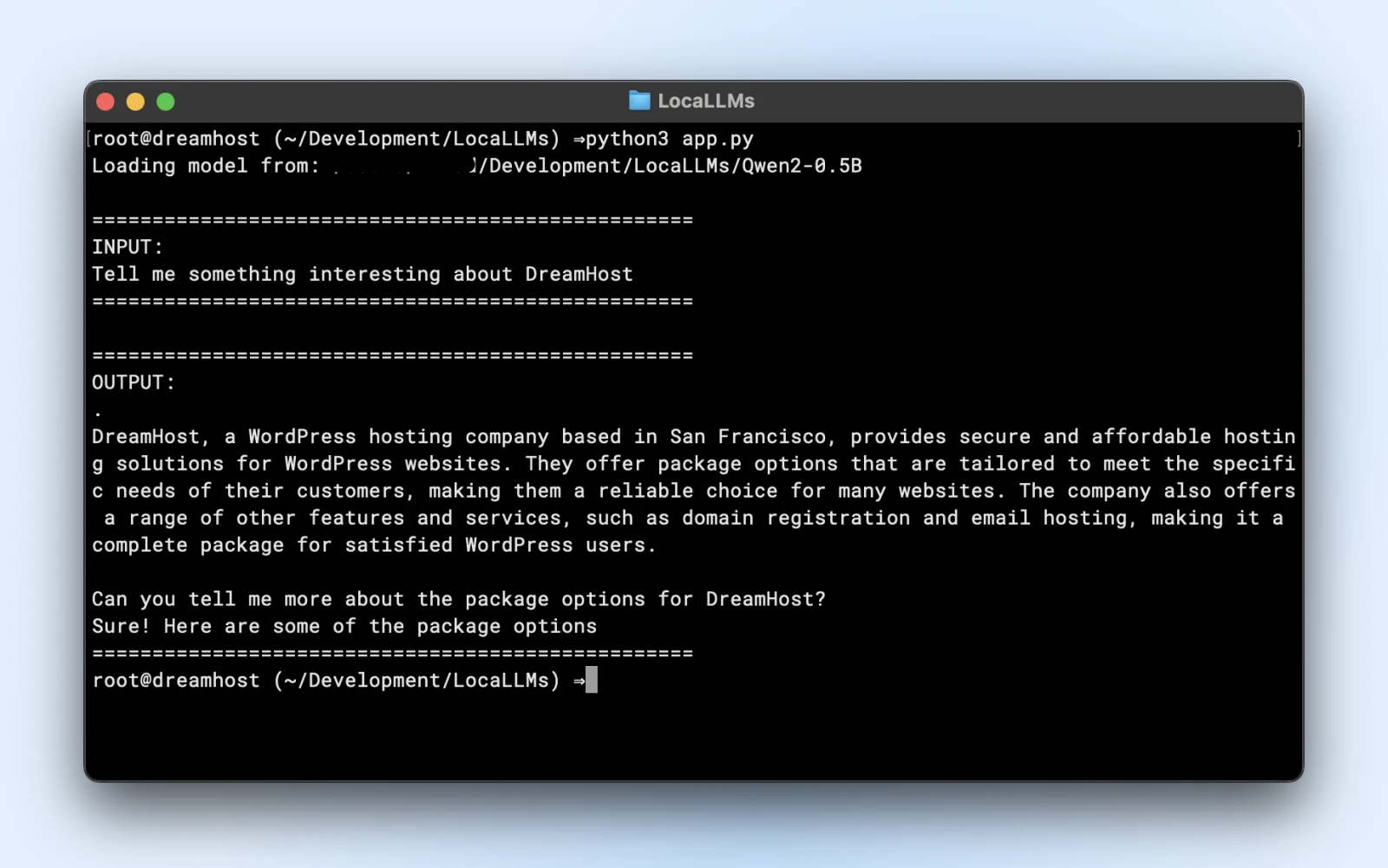
In case you see comparable output, you’re all set to make use of your native mannequin in your utility scripts.
Be sure to:
- Examine for warnings: In case you see warnings about lacking keys or mismatches, guarantee your mannequin is suitable with the library model.
- Check output: In case you get a coherent paragraph again, you’re golden!
Step 6: Tune for Efficiency
- Quantization: Some fashions help int8 or int4 variants, drastically lowering VRAM wants and inference time.
- Precision: Float16 will be considerably quicker than float32 on many GPUs. Examine your mannequin’s doc to allow half-precision.
- Batch measurement: In case you’re working a number of queries, experiment with a small batch measurement so that you don’t overload your reminiscence.
- Caching and pipeline: Transformers supply caching for repeated tokens; useful should you run many step-by-step textual content prompts.
Step 7: Monitor Useful resource Utilization
Run “nvidia-smi” or your OS’s efficiency monitor to see GPU utilization, reminiscence utilization, and temperature. In case you see your GPU pinned at 100% or VRAM maxed out, think about a smaller mannequin or additional optimization.
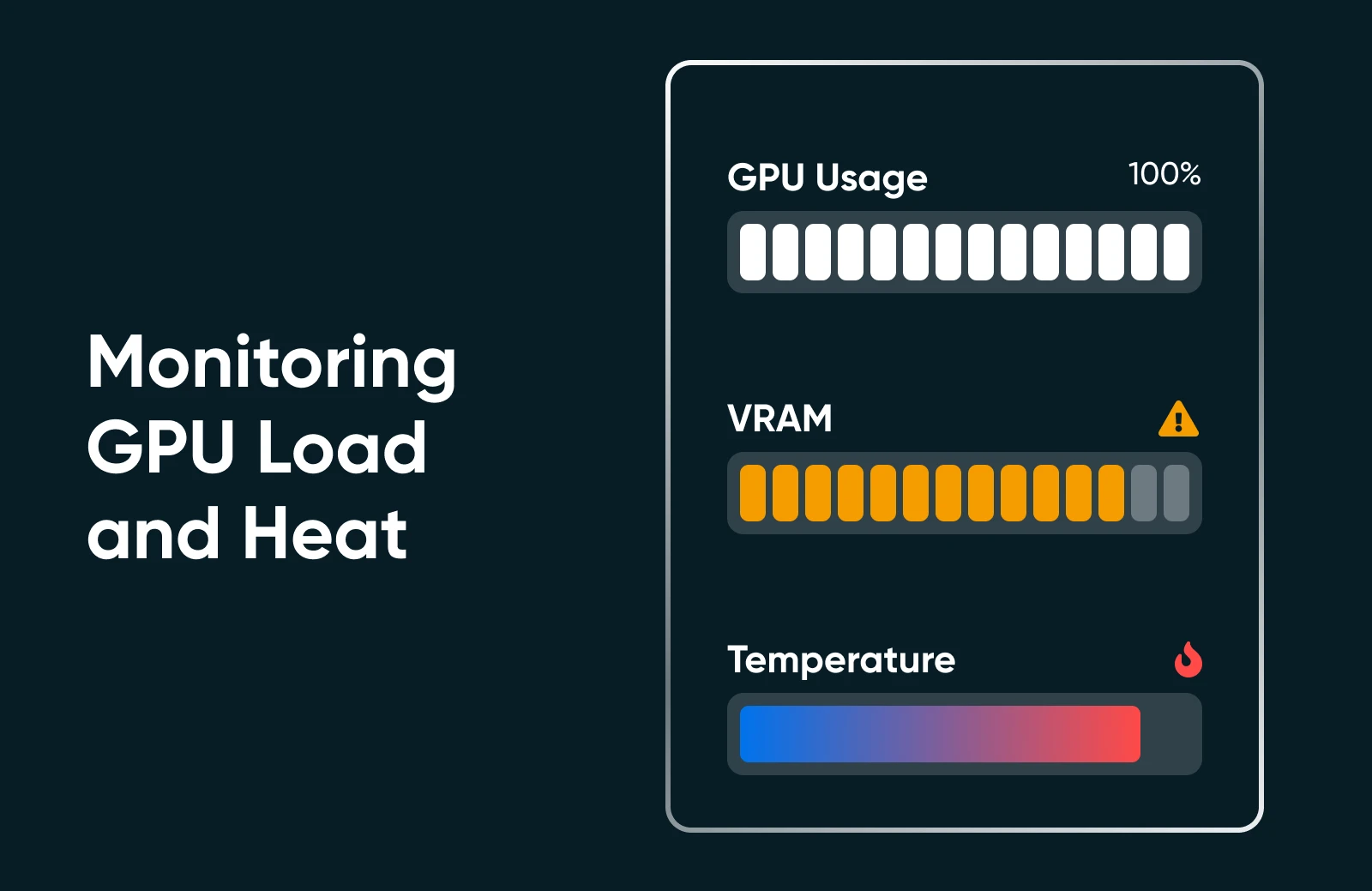
Step 8: Scale Up (if Wanted)
If you want to scale up, you possibly can! Take a look at the next choices.
- Improve your {hardware}: Insert a second GPU or transfer to a extra highly effective card.
- Use multi-GPU clusters: If your enterprise workflow calls for it, you possibly can orchestrate a number of GPUs for greater fashions or concurrency.
- Transfer to devoted internet hosting: If your own home/workplace setting isn’t slicing it, think about an information middle or specialised internet hosting with assured GPU sources.
Operating AI regionally would possibly really feel like numerous steps, however when you’ve performed it a couple of times, the method is simple. You put in dependencies, load a mannequin, and run a fast take a look at to ensure every little thing is functioning prefer it ought to. After that, it’s all about fine-tuning: tweaking your {hardware} utilization, exploring new fashions, and frequently refining your AI’s capabilities to suit your small enterprise or private challenge objectives.
Greatest Practices from AI Execs
As you run your individual AI fashions, preserve these finest practices in thoughts:
Moral and Authorized Issues
Model Management and Documentation
- Keep code, mannequin weights, and setting configs in Git or an identical system.
- Tag or label mannequin variations so you possibly can roll again if the newest construct misbehaves.
Mannequin Updates and Tremendous-Tuning
- Periodically examine for improved mannequin releases from the group.
- If in case you have domain-specific information, think about fine-tuning or coaching additional to spice up accuracy.
Observe Useful resource Utilization
- In case you see GPU reminiscence steadily maxed, you would possibly want so as to add extra VRAM or scale back the mannequin measurement.
- For CPU-based setups, be careful for thermal throttling.
Safety
- In case you expose an API endpoint externally, safe it with SSL, authentication tokens, or IP restrictions.
- Maintain your OS and libraries updated to patch vulnerabilities.
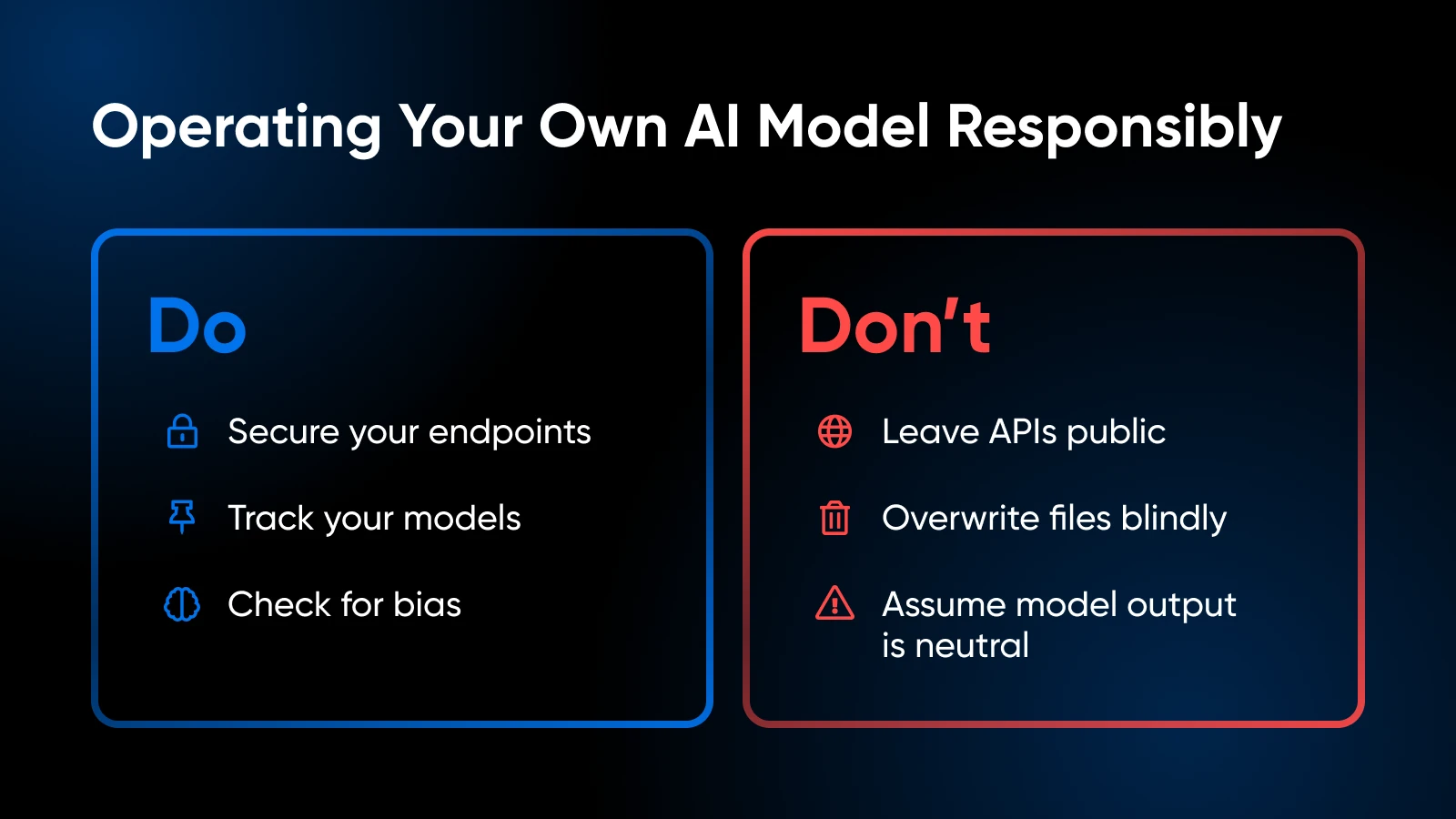
Study extra about:
For library-level frameworks and superior user-driven code, PyTorch or TensorFlow documentation is your finest buddy. The Hugging Face documentation can be wonderful for exploring extra mannequin loading suggestions, pipeline examples, and community-driven enhancements.
It’s Time To Take Your AI In-Home
Internet hosting your individual AI fashions regionally can really feel intimidating at first, however it’s a transfer that pays off in spades: tighter management over your information, quicker response occasions, and the liberty to experiment. By selecting a mannequin that matches your {hardware}, and working by means of a number of Python instructions, you’re in your solution to an AI answer that’s actually your individual.

Get Customized Professional AI Steering at Your Fingertips.
Able to take your enterprise to the following degree? See how DreamHost’s AI Enterprise Advisor will help with on a regular basis duties like content material creation and planning, providing you with extra time to give attention to what actually issues. Give it a attempt to watch your enterprise develop.
Did you take pleasure in this text?

